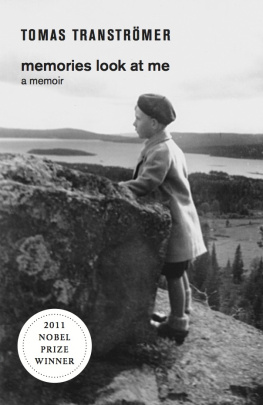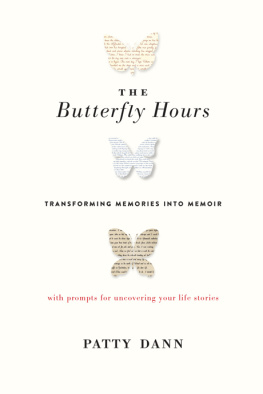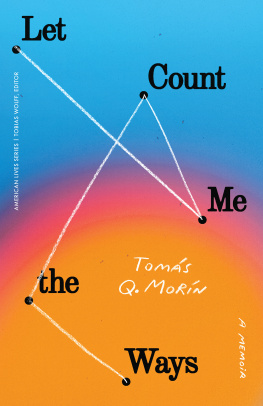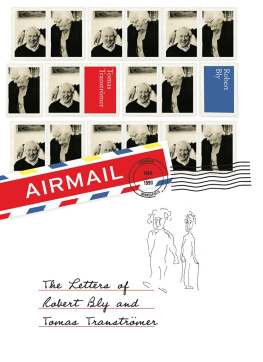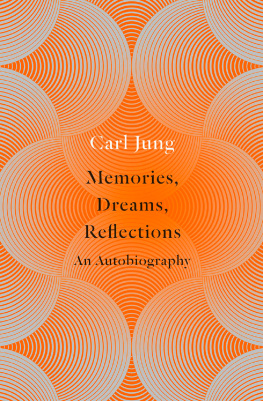Copyright 1983, 1993, 2006 by Tomas Transtrmer
Copyright 1987, 2006 by Robin Fulton
Compilation copyright 2011 by New Directions
All rights reserved. Except for brief passages quotedin a newspaper, magazine, radio, television, or website review, nopart of this book may be reproduced in any form or by any means, electronic ormechanical, including photocopying and recording, or by any information storageand retrieval system, without permission in writing from the Publisher.
First published in Sweden as Minnena ser mig in 1993 by Bonnierfrlagen A B, Box 3159, 103 63 Stockholm.
Published by arrangement with Bloodaxe Books Ltd., Highgreen,Tarset, Northumberland, ne48 1rp , U K.
Manufactured in the United States of America.
New Directions Books are printed on acid-free paper.
First published in The Great Enigma: NewCollected Poems ( ndp ) in 2006 and as aNew Directions Paperbook ( ndp ) in 2011.
Published simultaneously in Canada by Penguin Books CanadaLimited.
Design by Erik Rieselbach
Library of CongressCataloging-in-Publication Data
Transtrmer, Tomas, 1931
[Minnena ser mig. English]
Memories look at me : a memoir / TomasTranstromer ; translated from the Swedish by Robin Fulton.
p. cm.
A New Directions book.
Includes bibliographical references andindex.
eISBN 978-0-8112-2019-4
1. Transtrmer, Tomas, 1931 2. Authors,Swedish 20th century Biography.
I. Fulton, Robin. I I.Title.
P T9876.3.R3Z4713 2011
839.73'74dc23
[B]
2011043110
10 9 8 7 6 5 4 3 2 1
New Directions Books are published for JamesLaughlin
by New Directions Publishing Corporation
80 Eighth Avenue, New York, NY 10011
Tomas Transtrmer
Memories Look at Me
A Memoir
Translated from the Swedish by Robin Fulton
A New Directions Book
ALSO BY TOMAS TRANSTRMER
FROM NEW DIRECTIONS
The Great Enigma: New Collected Poems
MEMORIES
My life. Thinking these words, I see before me a streak oflight. On closer inspection it has the form of a comet. The brightest end, thehead, is childhood and growing up. The nucleus, the densest part, is infancy,that first period, in which the most important features of our life aredetermined. I try to remember, I try to penetrate that density. But it isdifficult to move in these concentrated regions, it is dangerous, it feels as ifI am coming close to death itself. Further back, the comet thins out thatsthe longer part, the tail. It becomes more and more sparse, but also broader. Iam now far out in the comets tail, I am sixty as I write this.
Our earliest experiences are for the most part inaccessible.Retellings, memories of memories, reconstructions based on moods that suddenlyflare into life.
My earliest datable memory is a feeling. A feeling of pride. I havejust turned three and it has been declared that this is very significant, that Iam now big. Im in bed in a bright room, then clamber down to the floorstunningly aware of the fact that I am becoming a grown-up. I have a doll towhom I gave the most beautiful name I could think of: Karin Spinna. I donttreat her in a motherly fashion. She is more like a comrade or someone I am inlove with.
We live in Stockholm, in the Sder area, at Swedenborgsgatan 33 (now called Grindsgatan ). Father is still part of the family butis soon to leave. Our ways are quite modern right from the start I use thefamiliar du form with my parents. My mothers parents are close by,just around the corner, in Blekingegatan .
My maternal grandfather, Carl Helmer Westerberg , was born in 1860. He was a ships pilot anda very good friend of mine, seventy-one years older than myself. Oddly enough,the same difference in age existed between him and his own maternal grandfather,who was born in 1789: the storming of the Bastille, the Anjala mutiny, Mozart writing his Clarinet Quintet.Two equal steps back in time, two long steps, yet not really so very long. Wecan touch history.
Grandfathers way of speech belonged to the nineteenth century.Many of his expressions would seem surprisingly old-fashioned today. But in hismouth, and to my ear, they felt altogether natural. He was a fairly short man,with a white moustache and a prominent and rather crooked nose like aTurks, as he said. His temperament was lively and he could flare up at anymoment. His occasional outbursts were never taken too seriously and they wereover as soon as they had begun. He was quite without persistent aggression.Indeed he was so conciliatory that he risked being labeled as soft. He wanted tokeep on the best side even of people who might be criticized in their absence in the course of ordinary conversation. But surely you must agree that X is acrook! Well, well thats something I dont really know about....
After the divorce, Mother and I moved to Folkungagatan 57, a lower-middle-class tenement,where a motley crowd lived in close proximity to one another. My memories oflife in that tenement arrange themselves like scenes from a film of the thirtiesor forties, with the appropriate list of characters. The lovable concierge, herstrong laconic husband whom I admired because, among other things, he had beenpoisoned by gas, which suggested a heroic closeness to dangerous machines.
A steady trickle of comers and goers didnt belong there. Theoccasional drunk would slowly return to his wits on the stairway. Several timesa week beggars would ring. They would stand on the porch mumbling. Mother madesandwiches for them she gave them slices of bread rather than money.
We lived on the fifth floor. At the top, that is. There were fourdoors, plus the entry to the attic. On one of them was the name Orke , press photographer. In a wayit seemed grand to live beside a press photographer.
Our next-door neighbor was a bachelor, well into middle age,yellowish complexion. He worked at home, running some sort of brokers businessby phone. In the course of his calls he often gave vent to hilarious guffawsthat burst through the walls into our apartment. Another recurring sound was thepop of corks. Beer bottles didnt have metal caps then. Those Dionysiac sounds,the guffaws of laughter and the popping of corks, seemed hardly to belong to thespectrally pale old fellow we sometimes met in the elevator. As the years passedhe became suspicious and the bouts of laughter diminished in frequency.
Once, there was an outbreak of violence. I was quite small. Aneighbor had been locked out by his wife; he was drunk and furious and she hadbarricaded herself in. He tried to break down the door and bawled out variousthreats. I remember him screaming the peculiar sentence: I dont give a damn ifI go to Kungsholmen ! I askedMother what he meant, about Kungsholmen . She explained that the police headquarters was there.From then on that part of town evoked a sense of something fearful. (Thisfeeling intensified when I visited St. Eriks Hospital and saw the war-woundedfrom Finland being cared for in the winter of 193940.)
Mother left for work early in the morning. She didnt take a tramor bus throughout her entire adult life she walked from Sder to stermalm , stermalm to Sder . She worked in the Hedvig Leonora School and was incharge of the third and fourth grades year after year. She was a devotedteacher, deeply involved with the children. One might imagine it would be hardfor her to accept retirement. But it wasnt she felt greatly relieved.
Since Mother worked we had home-help, a maid as she was called,though child-minder would have been nearer the truth. She slept in a tiny roomthat was really part of the kitchen and which was not included in the officialapartment-with-two-rooms-and-kitchen designation of our home.
When I was five or six, our maid was called Anna-Lisa and she camefrom Eslv , in Skne , in the south of Sweden. Ithought she was very attractive: frizzy blond hair, a turned-up nose, a mild Skne accent. She was a lovelyperson and I still feel something special when I pass Eslv station. But I have never actually stepped offthe train at that magic place.
Next page
